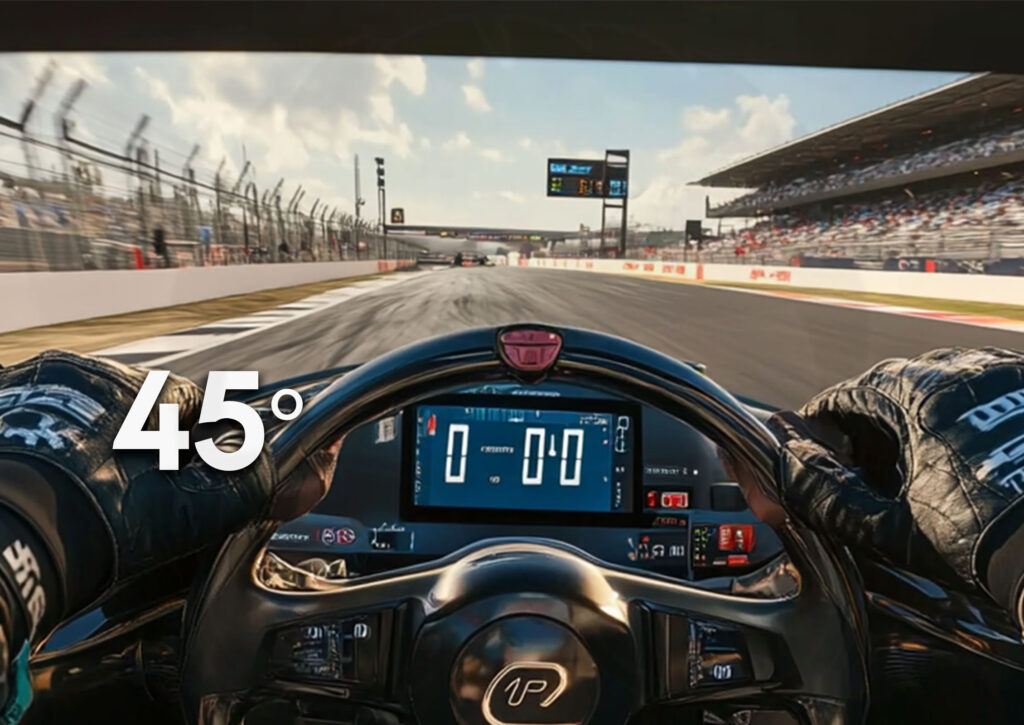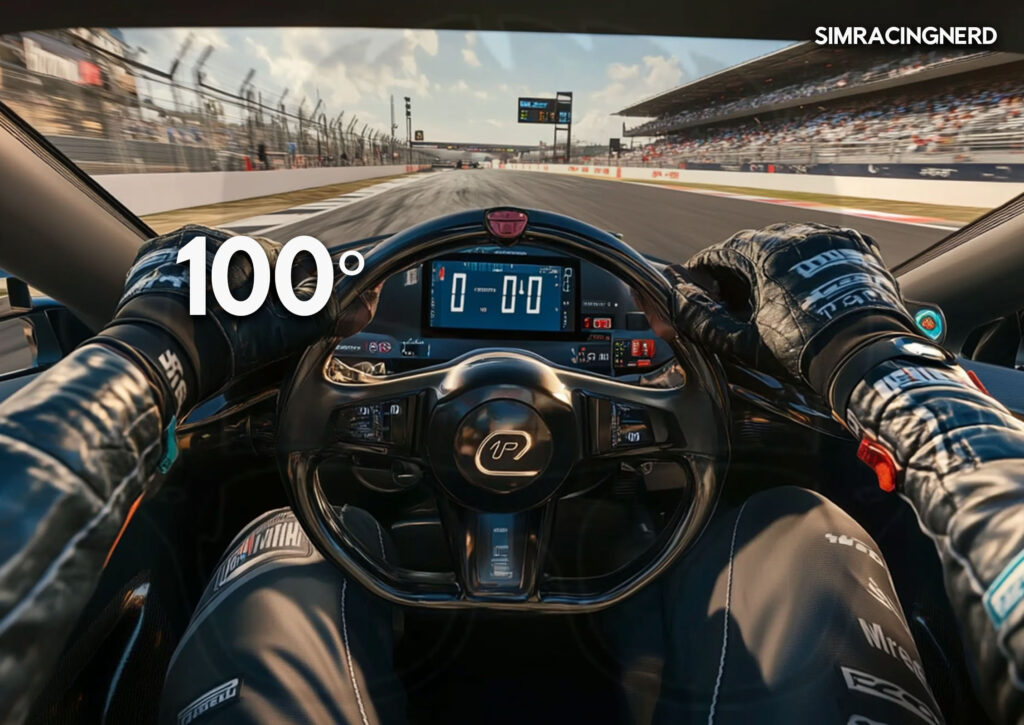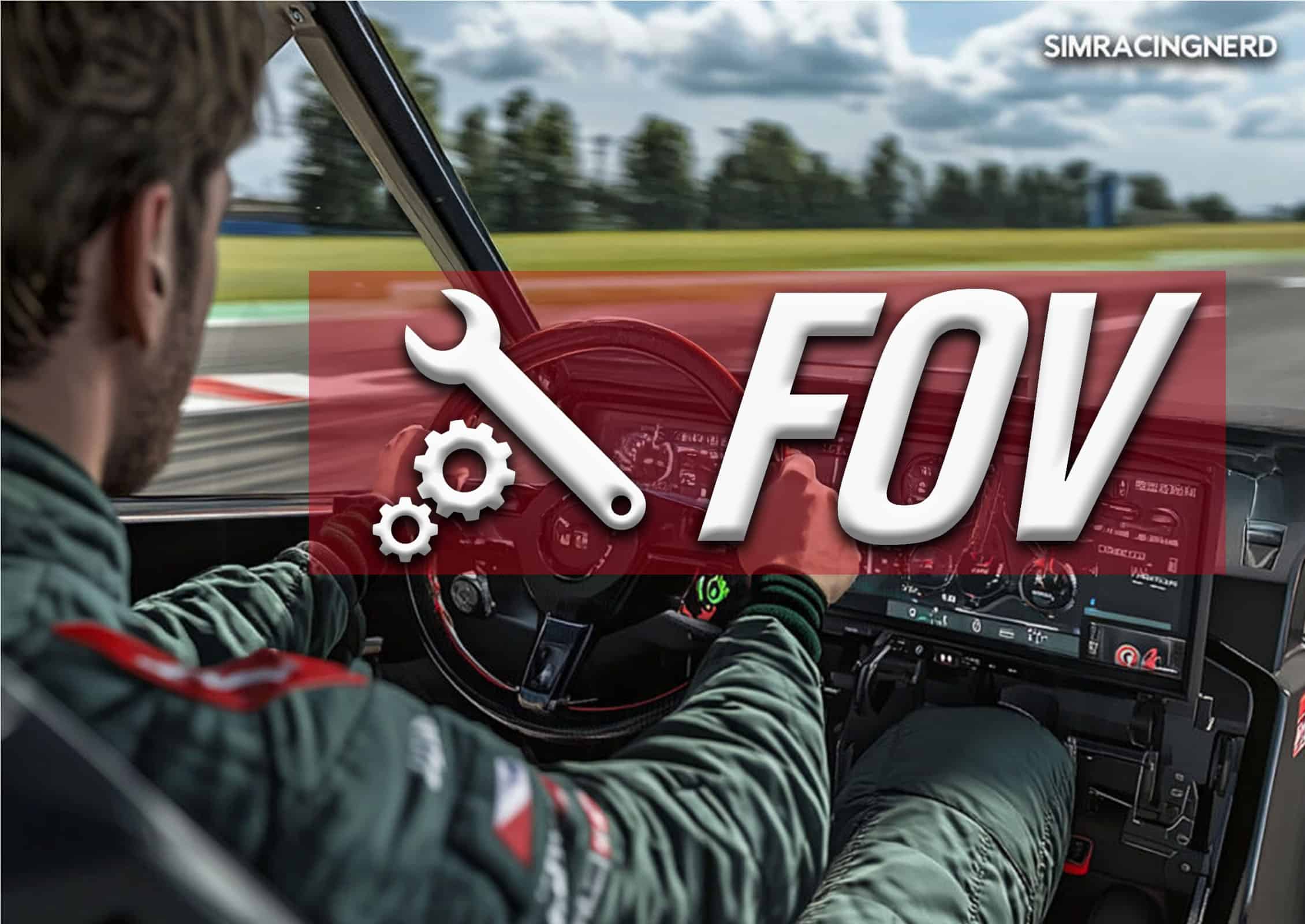Simulated racing games are becoming commonplace in the world of gaming and motor racing. As with aviation, racing drivers train on simulators running sim-racing titles such as Assetto Corsa Competizione, iRacing, rFactor and other games. In addition to the other equipment most often found on the sim-racing market, such as Direct Drive bases, Load Cell or hydraulic cranksets, etc., the sim-racing market also offers a wide range of accessories.
Among the most popular brands among racing teams are Simucube, Heusinkveld and Fanatec, which reaches both industry professionals through partnerships with Porsche, Bentley and BMW, and the general public via its ClubSport and CSL ranges.
One element that is common to both the professional and consumer sim-racing industries is the display. However, it’s not the same from one person to the next. It comes down not only to personal preference, but also to budget, whether you’re a weekend racer or a pro.
If your financial means are limited, you’re certainly not going to buy a sim-racing setup with three screens. It’s not only more expensive in terms of monitors, but also in terms of machine configuration. Let’s not forget that you’ll need a very powerful platform to run any sim-racing game on three screens.
So, the display is an important element in virtual racing immersion. What if I told you that standard display configurations, and sim-racing titles for that matter, aren’t very immersive from the ground up, and that one element can greatly improve that. I’m talking about FOV, and in this article, we’re going to tackle that point.
FOV definition
To define FOV, or Field of View, here’s what I found on Wikipedia: “FOV is the measure of the observable world as seen at a given time. In the case of optical instruments or sensors, it is the solid angle through which a detector is sensitive to electromagnetic radiation”.
Simply put, FOV is the angle over which your eyes can see objects or scenes. This angle is defined by both horizontal and vertical values. And that’s normal too, because you see what’s in front of you over a certain height (vertical) and width (horizontal) too.
Due to the positioning of our eyes, and our brain combining images from two different sources, we see wider rather than higher. In other words, our FOV is larger horizontally than vertically. According to some studies, the FOV of a healthy person would be around 200° horizontally, both eyes combined, and necessarily less if we take each eye individually.
To illustrate what I’ve just said, here’s an example of 2 different FOVs in sim-racing.


In the first photo, with the 45° field of view, you can only see the steering wheel and part of the dashboard. In the real world, this is only possible if your head is about 20 cm from the steering wheel. And in the second photo, with a FOV of 100°, i.e. more than double that of the first, you can see many more elements of the cockpit, such as the arms, the dashboard and controls on the right, part of the door and also the rest of the track.
What is the purpose of FOV?
The FOV, when set correctly, gives you a virtual image that matches what your eyes would see in real life. Driving a car to work or on a roadtrip, you have an FOV of around 200°, disregarding the vehicle’s blind spots of course. You’ll see the steering wheel, the instruments, a good part of the dashboard, your left-hand rear-view mirror, and so on. You won’t just see the steering wheel and half the windshield.
In sim-racing, and in any virtual application for that matter, a good FOV makes the brain believe that what you’re seeing is correct and understandable, thus reducing headaches or any other unpleasant sensation.
What’s more, a good FOV allows you to maintain the correct proportions of your sim-racing environment, such as distances between objects and vehicles, a wider view of the track and its occupants, etc., as well as adding a dose of immersion. Because, yes, you still need to “feel” the effects of the cars, like speed, for example. But this last point, speed, is a little tricky to reproduce, as our brains sense speed through peripheral vision (on the sides) and because of the objects passing by very quickly.
How to set the FOV in sim-racing
Before moving on to FOV settings in sim-racing, you’ll need to use online tools to obtain a so-called “standard” field-of-view value. This value is the result of a calculation requiring the following data: the size of your screen, the image format, the screen setup you have (1 monitor, 3 monitors, etc.) and the distance between the screen and your eyes.
Once this data has been entered and the “standard” FOV value calculated, you can use this information to fine-tune your settings. Oh yes, because setups change from one person to another, and I’m not talking about personal preferences either.
So, let’s say you have a “standard” FOV of 50° horizontally according to the online tool’s calculations. All you have to do is go to the sim-racing title’s display settings and see what it has set as the FOV value. Of course, you’ll need to set this according to your camera preference. Some prefer to have an on-board cockpit camera – and that’s what drivers who want total immersion do – while others will be more interested in a camera outside the car.
As for the camera, this is a personal preference and also depends on the sim-racing title. On Assetto Corsa, for example, seasoned drivers will choose the cockpit for the driver’s POV. But on Forza Horizon, I find that the hood view doesn’t really make sense, given that it’s more of an arcade title where fun is paramount.
Why is a good FOV setting important?
Well, to put it simply: immersion and a healthy lifestyle too. For immersion, it’s simple: the aim is to feel as much like a racing driver as possible, and a good FOV makes this possible, with of course a setup that supports this (3 screens for peripheral vision, a dynamic cockpit, a DD base, etc.). The more complete the setup, with the right equipment, the better the immersion.
As far as healthy living is concerned, FOV helps reduce eye fatigue and headaches too. Let’s not forget that a good screen setting is a question of ratio: the image should be neither too wide, nor too high. Distances must be correct, corresponding to what you would see in real life. And that’s why you need to set the FOV of your sim-racing title.








0 Comments